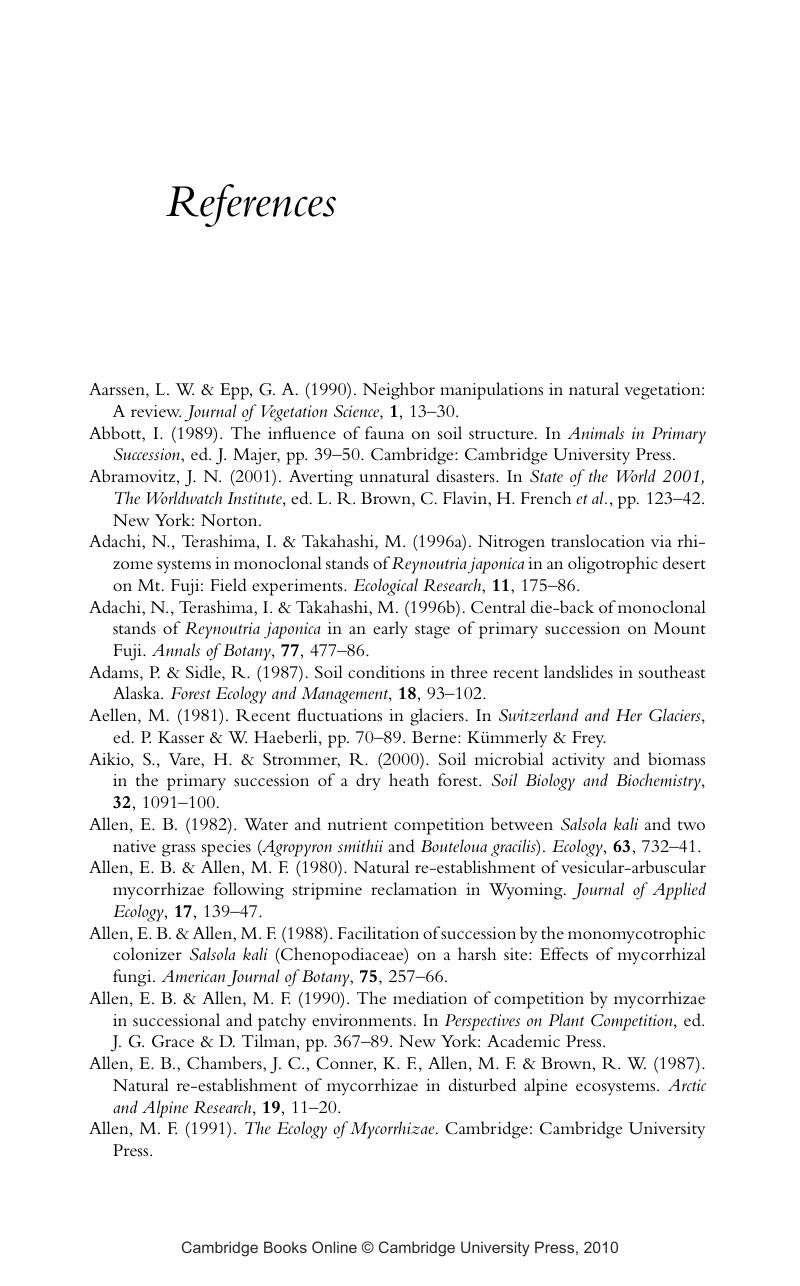Book contents
- Frontmatter
- Contents
- Preface and acknowledgements
- 1 Introduction
- 2 Denudation: the creation of a barren substrate
- 3 Successional theory
- 4 Soil development
- 5 Life histories of early colonists
- 6 Species interactions
- 7 Successional patterns
- 8 Applications of theory for rehabilitation
- 9 Future directions
- Glossary
- Illustration credits
- References
- Index
- References
References
Published online by Cambridge University Press: 08 January 2010
- Frontmatter
- Contents
- Preface and acknowledgements
- 1 Introduction
- 2 Denudation: the creation of a barren substrate
- 3 Successional theory
- 4 Soil development
- 5 Life histories of early colonists
- 6 Species interactions
- 7 Successional patterns
- 8 Applications of theory for rehabilitation
- 9 Future directions
- Glossary
- Illustration credits
- References
- Index
- References
Summary

- Type
- Chapter
- Information
- Primary Succession and Ecosystem Rehabilitation , pp. 357 - 428Publisher: Cambridge University PressPrint publication year: 2003



